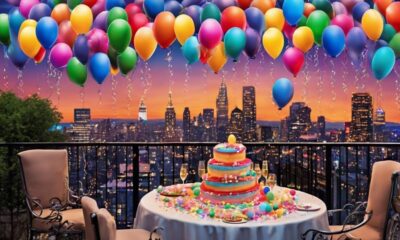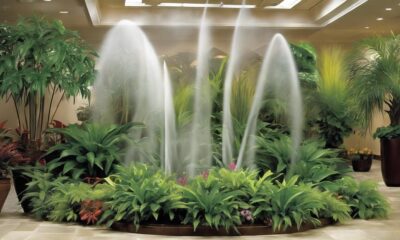Decor
Chinese New Year Gift Box
2025
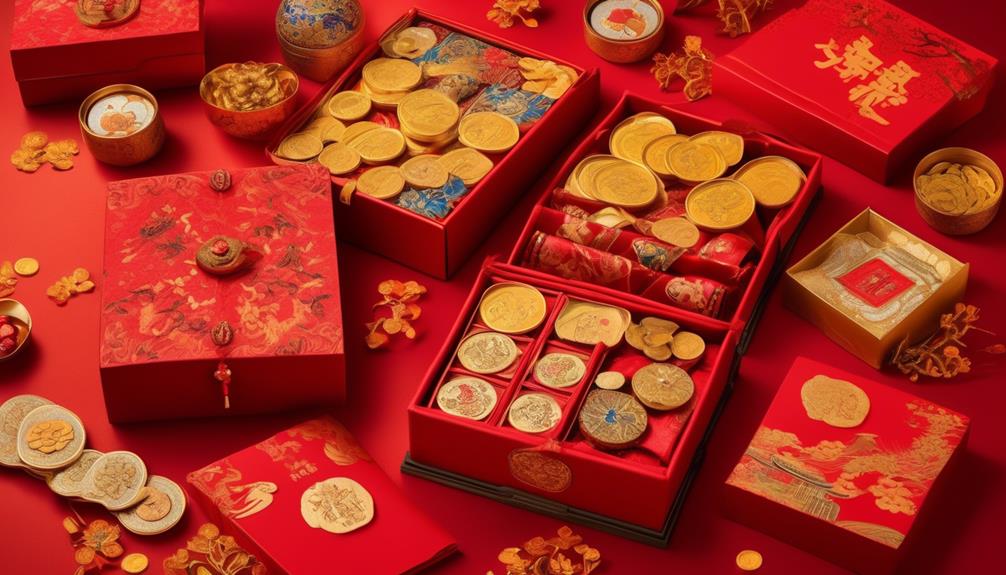
For Chinese New Year, we’ve meticulously assembled a gift box that honors the rich traditions and rituals of this significant celebration. Packed with a variety of symbolic goodies and decorations, our gift box aims to bestow fortune and prosperity upon its receiver.
Inside, you will find auspicious tea and a tea set, perfect for enjoying a warm cup of fortune. We have also included lucky red envelopes and money packets, symbolizing wealth and abundance. To enhance the recipient's prosperity, our gift box features feng shui items and Chinese calligraphy artwork.
Lastly, we offer personalized gifts to add a special touch to this festive season. Our Chinese New Year gift box is a thoughtful way to share blessings and celebrate this joyous occasion.
Key Takeaways
- Chinese New Year Gift Box can include traditional Chinese New Year treats like Nian Gao, almond cookies, dumplings, and crispy fried snacks that symbolize good fortune and abundance.
- Symbolic ornaments like red envelopes filled with money, jade jewelry, and Chinese knots can be included in the Chinese New Year Gift Box, representing good luck, prosperity, and unity.
- Auspicious tea and a tea set can be part of the Chinese New Year Gift Box, symbolizing harmony, purity, and hospitality in Chinese culture.
- Traditional designs and decorations on the Chinese New Year Gift Box, such as Chinese characters, dragons, and peonies, can enhance the symbolic meaning and add to the auspiciousness of the gift.
Traditional Chinese New Year Treats
During the festive season of Chinese New Year, traditional treats hold a significant place in the hearts and palates of celebrants. Traditional Chinese desserts are an integral part of the festivities, serving as a symbol of good luck and prosperity. These sweet delicacies are meticulously prepared using ancient recipes that have been passed down through generations.
One popular traditional Chinese dessert is the Nian Gao, also known as the New Year cake. Made from glutinous rice flour, it's sticky and chewy in texture. The Nian Gao is often steamed and then sliced into thick pieces. It's believed to bring good fortune and success for the coming year.
Another must-have treat during Chinese New Year is the almond cookie. These delicate cookies are made from ground almonds, sugar, and butter. They've a crumbly texture and a rich almond flavor that's simply irresistible. Almond cookies are often served as a gesture of goodwill and are a symbol of unity and harmony.
In addition to these traditional desserts, there's an abundance of festive food and snacks that are enjoyed during Chinese New Year. From savory dumplings and spring rolls to crispy fried snacks and candied fruits, there's something to satisfy every palate. These treats aren't only delicious but also symbolize abundance and prosperity, making them an essential part of the New Year celebrations.
Symbolic Ornaments for Good Luck
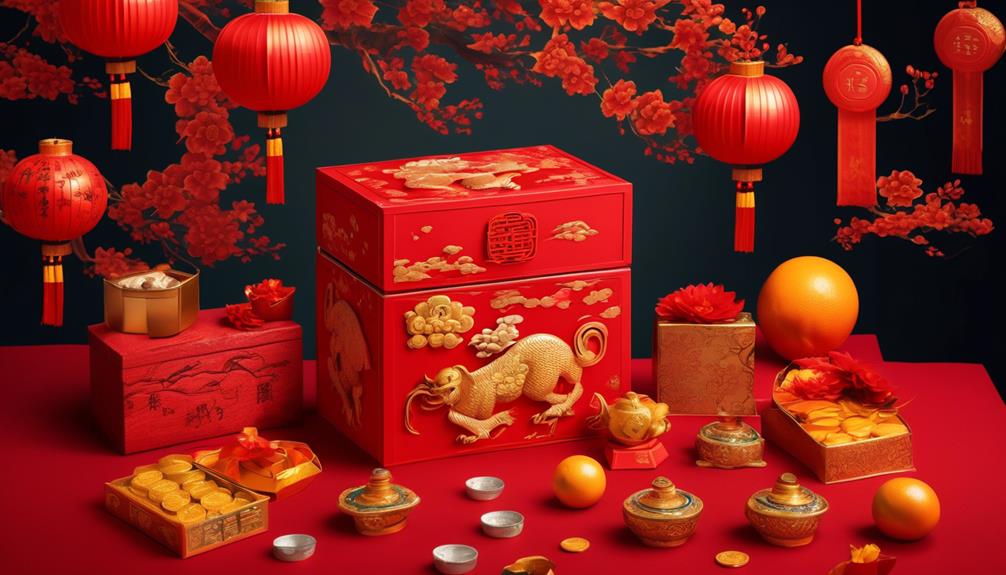
As we explore the symbolic ornaments for good luck in Chinese culture, it becomes evident that these items hold a significant role in enhancing the auspicious atmosphere of the festive season of Chinese New Year. Symbolic jewelry is one of the most popular forms of ornamentation during this time, as it's believed to bring prosperity and good fortune to the wearer. Traditional rituals also play a crucial part in the selection and use of these ornaments.
Red Envelopes: These envelopes, known as 'hongbao,' are filled with money and given as gifts during Chinese New Year. The color red symbolizes good luck and prosperity, making these envelopes a highly auspicious gift.
Jade Jewelry: Jade has long been revered in Chinese culture for its symbolic meaning. It represents purity, harmony, and good luck. Wearing jade jewelry during Chinese New Year is believed to bring protection and prosperity to the wearer.
Chinese Knots: These intricate knots, made from brightly colored cords, are used as decorative ornaments during Chinese New Year. They symbolize unity, prosperity, and good luck. Chinese knots can be hung on doors, windows, or even worn as accessories.
Auspicious Tea and Tea Set
Tea holds deep cultural significance in Chinese traditions. It symbolizes harmony, purity, and hospitality. The act of serving and drinking tea isn't merely a daily ritual, but a symbol of respect and connection.
The traditional tea ceremony is another important aspect of Chinese tea culture. It involves meticulous preparation and graceful movements. This ceremony reflects the values of balance and tranquility.
Tea, therefore, plays a multifaceted role in Chinese society. It is not just a beverage but a way of expressing and embodying cultural values.
Tea Symbolism in Chinese Culture
In Chinese culture, the auspiciousness of tea and the significance of a tea set are deeply ingrained, with their symbolism extending beyond mere refreshment.
Tea holds a special place in Chinese society, symbolizing harmony, respect, and prosperity. It's often seen as a representation of the Chinese way of life and is considered a staple in daily rituals and ceremonies.
Chinese tea varieties, such as green tea, black tea, and oolong tea, each have their own unique symbolism and are often associated with different occasions or purposes.
In comparison to tea ceremonies in other cultures, the Chinese tea ceremony is known for its intricate rituals and attention to detail.
The tea set itself is also highly valued, with its elegance and craftsmanship reflecting the refined tastes and cultural pride of the Chinese people.
Traditional Tea Ceremony
During the traditional tea ceremony, the auspicious tea and meticulously crafted tea set take center stage, embodying the rich symbolism and cultural heritage of Chinese society.
The tea ceremony is a time-honored tradition that carries deep meaning and significance. It isn't just about drinking tea; it's a ritual that symbolizes harmony, respect, and tranquility.
The choice of tea is crucial, as each type represents different intentions and wishes. For example, green tea represents growth and renewal, while black tea symbolizes strength and stability.
The tea set itself is a work of art, with intricate designs and delicate craftsmanship. Each element of the tea set, from the teapot to the teacups, has a specific purpose and meaning.
The tea ceremony is a beautiful way to connect with Chinese culture and experience its profound symbolism.
Lucky Red Envelopes and Money Packets
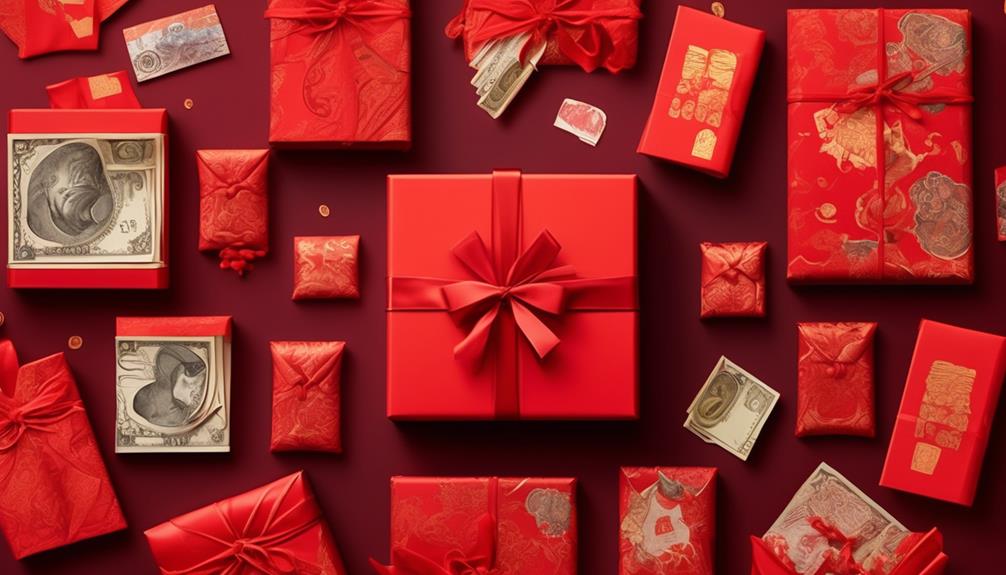
When it comes to Chinese New Year, lucky red envelopes and money packets play a significant role in the celebrations.
These envelopes hold symbolic meaning as they're believed to bring good luck and ward off evil spirits.
Traditional designs and decorations are often used to enhance their auspiciousness, making them a cherished and meaningful gift during this festive season.
Symbolic Meaning of Envelopes
Lucky Red Envelopes and Money Packets hold significant symbolic meaning in Chinese culture. They represent blessings, prosperity, and good fortune. These traditional envelopes are adorned with lucky symbols and vibrant red colors. They are commonly exchanged during special occasions, such as Chinese New Year and weddings. The cultural significance of these envelopes can be understood through their association with traditional values and beliefs.
The symbolic meaning of Lucky Red Envelopes and Money Packets can be summarized in the following ways:
- Blessings: The act of giving and receiving these envelopes is believed to bring blessings and good luck to both the giver and the recipient.
- Prosperity: The monetary gifts inside the envelopes symbolize wealth and financial abundance. They wish the recipient a prosperous future.
- Good fortune: The red color of the envelopes is considered auspicious. It is believed to ward off evil spirits and bring good fortune to the recipient.
Through the exchange of Lucky Red Envelopes and Money Packets, the Chinese culture celebrates and manifests its belief in luck, prosperity, and positive energy.
Traditional Designs and Decorations
Traditional designs and decorations play a significant role in enhancing the symbolic meaning of Lucky Red Envelopes and Money Packets in Chinese culture. These traditional elements not only add aesthetic value but also carry deep cultural significance. For example, the traditional lantern festival, celebrated during the Chinese New Year, is an important occasion where beautifully decorated lanterns are displayed. Similarly, Chinese paper cutting, known as jianzhi, is a traditional art form that involves cutting intricate designs on red paper. These designs often feature symbols of good luck, happiness, and prosperity, making them perfect for adorning Lucky Red Envelopes and Money Packets. The table below showcases some common traditional designs and decorations found on these envelopes and packets:
| Traditional Design/Decoration | Symbolic Meaning |
|---|---|
| Chinese characters | Good luck |
| Dragons | Power and strength |
| Peonies | Wealth and prosperity |
Feng Shui Items for Prosperity
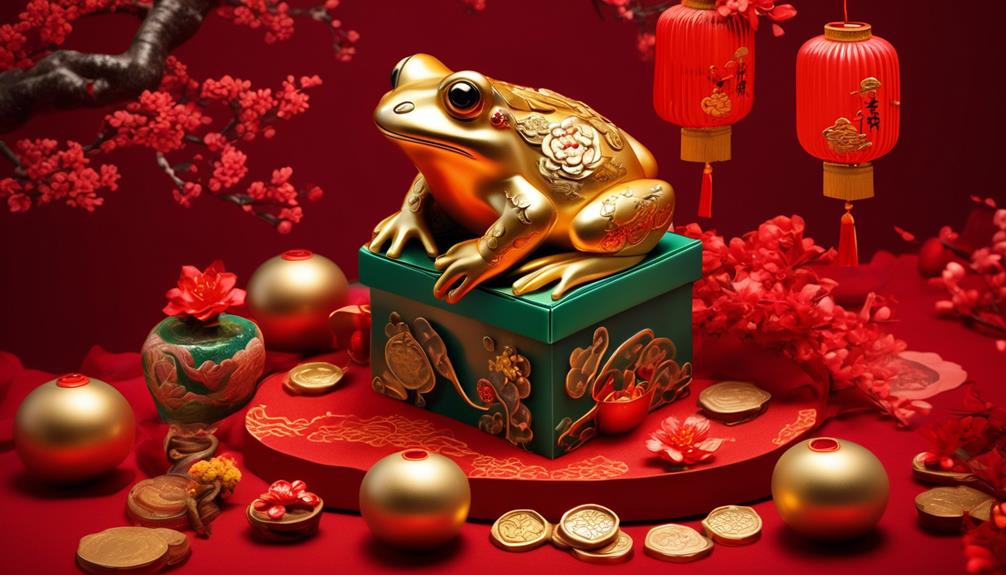
To enhance prosperity in our lives, incorporating Feng Shui items becomes essential. Feng Shui is an ancient Chinese practice that aims to harmonize the energy in our surroundings, thereby bringing good fortune, wealth, and success.
When it comes to attracting prosperity, there are several Feng Shui tips and lucky charms that we can incorporate into our homes or workplaces.
- Wealth Vase: A wealth vase is a powerful Feng Shui cure that symbolizes abundance and prosperity. It's believed to attract wealth and fortune when placed in the wealth corner of our home or office. The vase is filled with auspicious items such as coins, gemstones, and wealth symbols.
- Money Tree: The money tree is a popular Feng Shui item known for its ability to attract wealth and prosperity. Its vibrant green leaves symbolize growth and abundance. Placing a money tree in the wealth corner or the entrance of our home is believed to bring financial luck and success.
- Dragon Turtle: The dragon turtle is a powerful Feng Shui symbol that combines the energies of the dragon and the turtle. It's considered a symbol of longevity, wealth, and success. Placing a dragon turtle in the north or southeast corner of our home or office is believed to enhance prosperity and career luck.
Chinese Calligraphy and Artwork
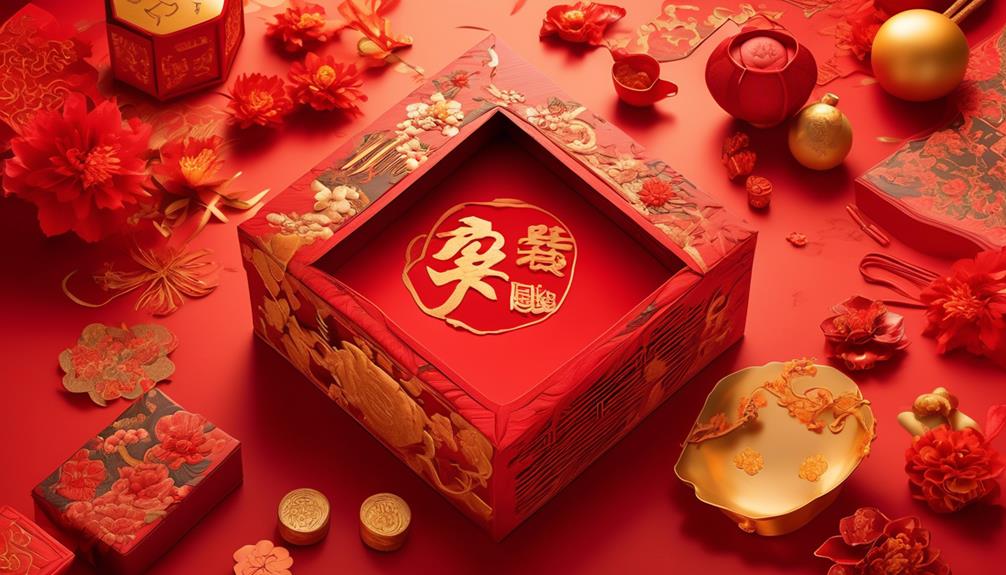
In exploring the realm of Feng Shui items for prosperity, we now turn our attention to the captivating world of Chinese calligraphy and artwork.
Chinese calligraphy, an ancient art form, holds a profound significance in Chinese culture. It isn't merely a form of writing, but a way of expressing one's emotions and capturing the essence of the subject. The brush strokes, ink density, and even the paper used play a vital role in conveying the artist's intentions.
Chinese calligraphy techniques are diverse and require precision and mastery. Each stroke is executed with careful consideration of its placement and direction. The brush must be held at the correct angle and pressure, ensuring a harmonious flow of energy. Some popular techniques include 'xieyi,' which focuses on the essence and spirit of the subject, and 'kaishu,' a more structured and formal style.
Traditional Chinese painting styles often accompany calligraphy, creating a harmonious blend of art forms. These paintings often depict landscapes, flowers, or animals, and are characterized by their use of vivid colors, flowing lines, and a sense of balance and harmony. The techniques employed, such as 'gongbi' with its intricate details, or 'xieyi' with its expressive brushstrokes, contribute to the unique appeal of Chinese artwork.
Personalized Gifts for a Special Touch
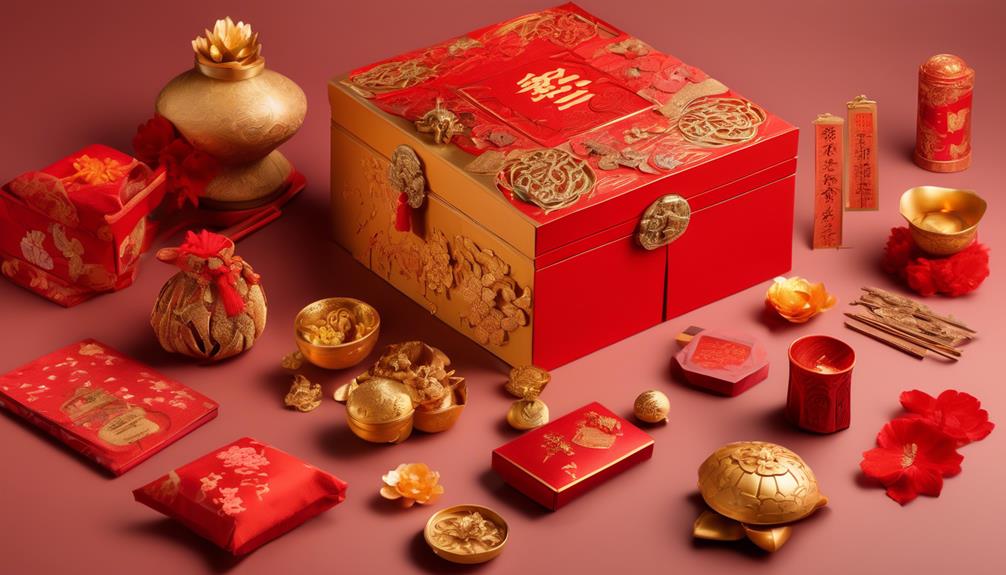
For a truly special touch, personalized gifts offer a unique and thoughtful way to show your appreciation and make a lasting impression. Customizing gifts allows you to create something that's tailored specifically to the recipient, showcasing your attention to detail and thoughtfulness.
Here are some personalized gift ideas to consider:
- Engraved jewelry: A piece of jewelry with the recipient's initials or a special message can be a meaningful and elegant gift. It serves as a constant reminder of your love and appreciation.
- Customized photo album: Compile cherished memories into a beautifully designed photo album. Add personalized captions or quotes to make it even more special. This gift allows the recipient to relive precious moments and create new memories.
- Monogrammed accessories: Personalize everyday items such as wallets, phone cases, or keychains with the recipient's initials. This adds a touch of elegance and uniqueness to their everyday essentials.
Frequently Asked Questions
How Can I Personalize a Chinese New Year Gift Box to Make It More Special?
When it comes to personalized gift ideas, there are countless ways to make a Chinese New Year gift box more special.
One creative packaging idea is to add a personal touch by incorporating the recipient's name or initials.
Another option is to include meaningful symbols or decorations that are significant to the Chinese New Year tradition.
What Are Some Traditional Chinese New Year Treats That Are Commonly Included in a Gift Box?
When it comes to traditional Chinese New Year treats, there are a plethora of popular festive snacks that are commonly included in a gift box.
These delectable delights range from sweet and crispy pineapple tarts to savory and fragrant bak kwa (barbecued pork jerky).
Other favorites include crunchy love letters, melt-in-your-mouth kueh bangkit (coconut cookies), and addictive peanut cookies.
These treats not only satisfy our taste buds but also symbolize abundance, good fortune, and happiness during the festive season.
Are There Any Specific Symbolic Ornaments That Are Believed to Bring Good Luck During the Chinese New Year?
When it comes to symbolic ornaments for Chinese New Year, there are several believed to bring good luck.
One popular choice is the Fu character, representing blessings and good fortune.
Another is the red envelope, filled with money as a symbol of prosperity and wealth.
The golden ingot, resembling ancient Chinese currency, is also considered lucky.
These ornaments can be personalized and incorporated into a Chinese New Year gift box to bring good luck and blessings to the recipient.
What Is the Significance of Lucky Red Envelopes and Money Packets in Chinese New Year Celebrations?
Lucky red envelopes and money packets hold great significance in Chinese New Year celebrations. These vibrant envelopes, filled with money, symbolize good fortune and blessings for the recipient. It's believed that the red color wards off evil spirits and brings prosperity for the coming year.
As for the Traditional Chinese New Year treats included in a gift box, they're cherished delicacies that are exchanged to express well wishes and strengthen familial bonds during this auspicious time.
Can You Provide Some Examples of Feng Shui Items That Are Commonly Included in Chinese New Year Gift Boxes for Prosperity?
Feng shui items are commonly included in Chinese New Year gift boxes for prosperity. These items are believed to bring positive energy and luck into the recipient's life. Some examples of feng shui items that are often included are lucky coins, wealth symbols, and auspicious animal figurines.
These items are carefully chosen based on their symbolic meanings and are thought to enhance the recipient's wealth, success, and overall well-being. Including these feng shui items in a Chinese New Year gift box is a thoughtful gesture that wishes the recipient good fortune for the year ahead.
Conclusion
In conclusion, the Chinese New Year gift box offers a delightful combination of traditional treats, symbolic ornaments, auspicious tea, and lucky red envelopes. These items aren't only steeped in cultural significance but also bring good luck and prosperity to the recipient.
Additionally, personalized gifts such as Chinese calligraphy and artwork add a special touch to this festive occasion. Whether you're seeking to honor tradition or surprise someone with a unique gift, the Chinese New Year gift box has something for everyone.
- About the Author
- Latest Posts
Introducing Ron, the home decor aficionado at ByRetreat, whose passion for creating beautiful and inviting spaces is at the heart of his work. With his deep knowledge of home decor and his innate sense of style, Ron brings a wealth of expertise and a keen eye for detail to the ByRetreat team.
Ron’s love for home decor goes beyond aesthetics; he understands that our surroundings play a significant role in our overall well-being and productivity. With this in mind, Ron is dedicated to transforming remote workspaces into havens of comfort, functionality, and beauty.
Architecture Home Styles
What Elements Define Mission Style?
Get ready to uncover the essence of Mission style furniture – where form, function, and philosophy intertwine in a captivating design narrative.
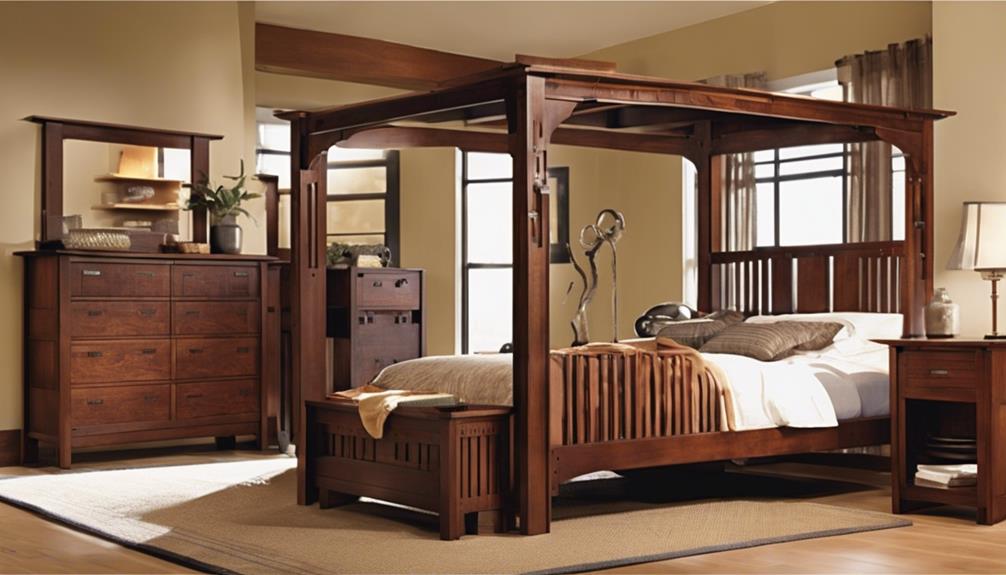
When it comes to defining Mission style, the elements are more than just a mere reflection of design; they embody a philosophy.
The fusion of form and function in Mission style furniture goes beyond mere aesthetics. By exploring the origins and influences, we uncover a rich tapestry of history and craftsmanship that continues to shape contemporary interpretations.
Join us as we unravel the intricate threads that make up the fabric of Mission style, revealing a timeless tradition that continues to captivate designers and enthusiasts alike.
Key Takeaways
- Clean lines and minimal ornamentation characterize Mission style furniture.
- Natural hardwoods like Oak and Cherry are prominent in Mission furniture construction.
- Exposed joints and precise craftsmanship highlight authenticity and structural integrity.
- Warm, earthy tones and traditional finishes define the timeless appeal of Mission style.
Origins and Influences
Crafting a response to Victorian excesses and mass-produced industrial furniture, we delve into the origins and influences of Mission style elements.
The Arts and Crafts movement, spearheaded by Gustav Stickley, played a pivotal role in shaping this style. Stickley aimed to uphold the values of individual craftsmanship and authenticity, countering the dehumanization brought about by mass production.
Drawing inspiration from Shaker style, Mission furniture embodies simplicity of design and a dedication to high-quality craftsmanship. This style marked a significant shift towards the celebration of artisanal workmanship, emphasizing the uniqueness and integrity of each piece.
Key Characteristics and Features
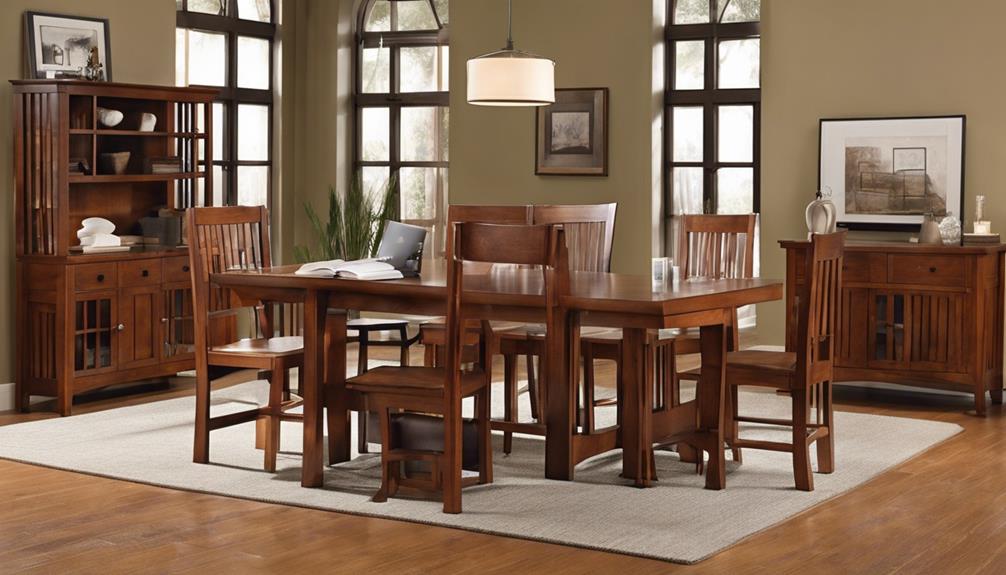
In exploring the essence of Mission style furniture, we encounter a design philosophy rooted in simplicity, precision craftsmanship, and a profound respect for natural materials. This style is characterized by:
- Clean Lines: Mission style furniture features simple horizontal and vertical lines, often with minimal ornamentation. The design focuses on straight edges and geometric shapes, giving a sense of balance and symmetry to the pieces.
- Natural Materials: Crafted primarily from hardwoods like Oak, Cherry, Walnut, and Maple, Mission furniture highlights the beauty and durability of wood. The emphasis on natural materials reflects a connection to the earth and a desire for authenticity in craftsmanship.
- Exposed Joints: Exemplifying precision and quality craftsmanship, exposed joinery is a common feature in Mission furniture. Visible joints not only add to the aesthetic appeal but also speak to the durability and structural integrity of the pieces.
Mission style furniture's timeless appeal lies in its marriage of form and function, where every element serves a purpose, celebrating the beauty of simplicity and the artistry of the craftsman.
Materials and Construction Techniques
Utilizing high-quality hardwoods such as Oak, Cherry, Walnut, and Maple, Mission style furniture exemplifies meticulous craftsmanship and durability through exposed mortise and tenon joints. The emphasis on natural grain and the precision required in crafting these pieces is evident in the vertical and horizontal lines that define Mission style furniture. The use of quality wood not only highlights the beauty of the material but also ensures the longevity of the pieces. The construction techniques in Mission style furniture focus on exposed joints, showcasing the skill of the craftspeople and reinforcing the sturdy nature of the furniture.
In Mission style furniture, there's a deliberate lack of embellishment, allowing the simple yet elegant design to speak for itself. The durable construction methods, including block style feet, contribute to the robust appearance of the furniture while maintaining a timeless aesthetic. Additionally, the choice of leather upholstery complements the traditional styling of Mission furniture, adding a touch of sophistication and ensuring longevity in both style and durability.
Colors and Finishes

Warm, earthy tones like golden oak, rich cherry, and deep walnut finishes are prominent features in Mission style furniture, reflecting a traditional and timeless aesthetic. When it comes to colors and finishes in Mission furniture, here are some key points to consider:
- Natural Wood Grain: Popular finishes in Mission style furniture often include medium to dark stains that enhance the natural beauty of wood grains, emphasizing the vertical and horizontal lines characteristic of Mission design.
- Traditional Hues: Mission style colors lean towards warm browns, reddish tones, and dark chocolates, creating a sense of richness and depth in the furniture pieces.
- Modern Interpretations: While traditional finishes like Mission Oak highlight the natural characteristics of the wood, modern interpretations may experiment with different finishes to adapt to contemporary tastes while still maintaining the essence of Mission style's cozy and inviting ambiance.
These color choices and finishes play a crucial role in defining the classic and enduring appeal of Mission style furniture.
Evolution and Contemporary Interpretations
The evolution of Mission style furniture has seen a shift towards incorporating modern materials like metal and glass while retaining its traditional design elements. Contemporary interpretations of Mission style furniture often focus on blending solid wood with metal or glass to create a modern sensibility and aesthetic. This fusion allows for a timeless look that appeals to a wide range of individuals seeking quality pieces with durability. By highlighting grain patterns and utilizing natural grains and characteristics of the wood, these pieces showcase the elegance and spare simplicity that define Mission style. The exposed joints in modern Mission furniture add a touch of authenticity, while the crisp lines and lack of ornate details provide a sense of sophistication. Quality wood means durability to any piece, ensuring that contemporary Mission style furniture is not only visually appealing but also built to last.
| Keywords | Description |
|---|---|
| Solid Wood Furniture | Provides durability and a classic look. |
| Natural Grains and Characteristics | Highlight the beauty of wood in each piece. |
| Crisp Lines and Lack of Ornate Details | Give a sophisticated and clean appearance. |
| Elegant and Spare Simplicity | Emphasizes a refined and uncluttered design. |
| Exposed Joints and Highlighted Grain Patterns | Add authenticity and visual interest to the furniture. |
Frequently Asked Questions
What Are the Elements of Mission Style?
When we explore the essence of Mission style, we uncover a design philosophy rooted in simplicity, craftsmanship, and functionality.
The hallmark elements of this style encompass a celebration of natural wood grain, clean horizontal and vertical lines, and exposed mortise-and-tenon joints, showcasing both durability and aesthetic beauty.
These characteristics are further accentuated by block-style feet, leather seatings, and a preference for hardwoods like Oak, Cherry, Walnut, and Maple, epitomizing timeless elegance.
What Defines Mission Style?
When we consider what defines Mission style, we focus on the simplicity of horizontal and vertical lines, limited ornamentation, and the emphasis on natural wood grain and exposed joinery.
This style showcases rectangular shapes, block-style feet, and leather seats on chairs. Crafted from hardwoods like Oak, Cherry, Walnut, and Maple, Mission furniture radiates timeless elegance with exposed pegs and minimal decorative elements as its defining features.
What Makes a Mission Style House?
When we think about what makes a mission style house, we focus on the distinctive features that give it its unique charm. Elements like terracotta tile roofs, white stucco exteriors, and intricate tile accents are key in defining this architectural style.
Additionally, stained wood accents, tile floors, and stone fireplaces create a warm and inviting atmosphere inside these homes. Quatrefoil windows, cast stone columns, and ornate iron stair railings further contribute to the timeless appeal of Mission style architecture.
What Is the Difference Between Craftsman and Mission Style?
When comparing Craftsman and Mission styles, it's crucial to note their distinct design features. Craftsman pieces often showcase decorative elements and curved lines, while Mission furniture focuses on straight lines and minimal ornamentation.
Craftsman style may incorporate intricate detailing, giving it a refined look, whereas Mission style emphasizes practical functionality and exposed joinery for a simpler, sturdier aesthetic. Both styles value craftsmanship and quality materials but offer unique characteristics that cater to different tastes.
Conclusion
In conclusion, the timeless beauty and functionality of mission style furniture are evident in its simple lines, natural materials, and exquisite craftsmanship.
Just like a well-crafted piece of mission furniture, this design aesthetic stands the test of time, blending traditional charm with modern appeal.
It's like a carefully constructed puzzle, each element fitting perfectly together to create a stunning and enduring work of art that will be cherished for generations to come.
- About the Author
- Latest Posts
Introducing Ron, the home decor aficionado at ByRetreat, whose passion for creating beautiful and inviting spaces is at the heart of his work. With his deep knowledge of home decor and his innate sense of style, Ron brings a wealth of expertise and a keen eye for detail to the ByRetreat team.
Ron’s love for home decor goes beyond aesthetics; he understands that our surroundings play a significant role in our overall well-being and productivity. With this in mind, Ron is dedicated to transforming remote workspaces into havens of comfort, functionality, and beauty.
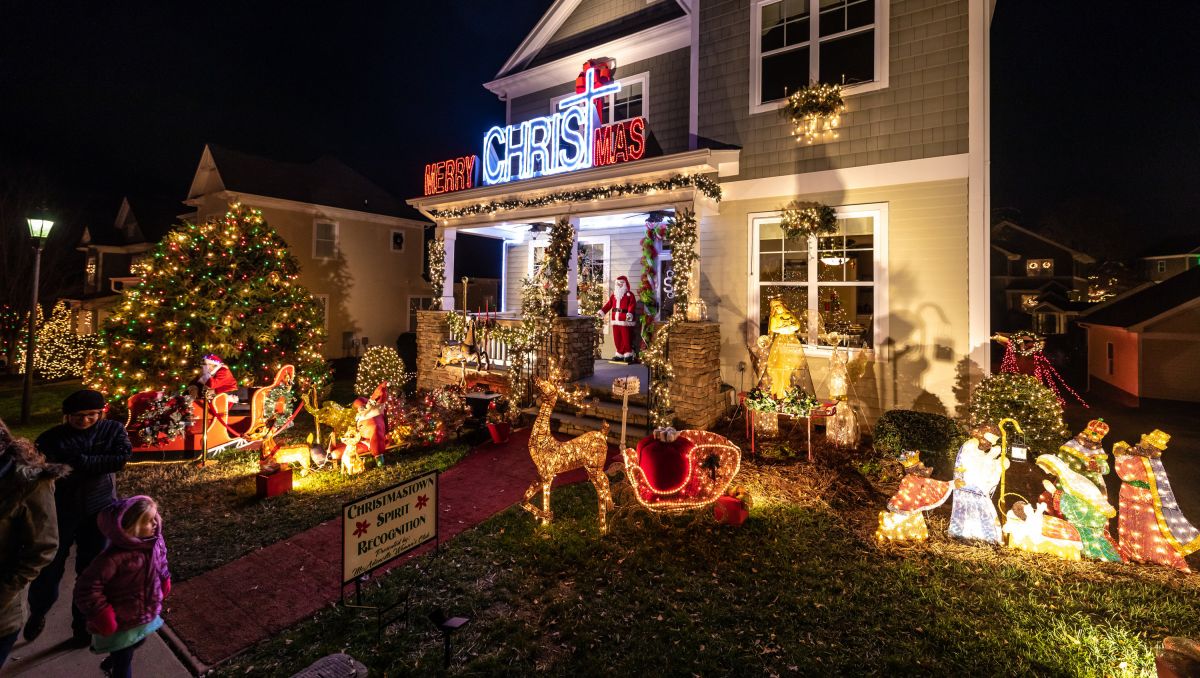

Christmas is a special time of year that is full of magic. The process of decorating your home for the holiday season can be quite thrilling. In North Carolina, there are numerous choices available for holiday decorations. Whether you are interested in adding a Pre-lit Christmas tree, Colorful garland and swags, or incorporating Colonial style decorations into your home, you will discover a wide range of options.
Pre-lit Christmas trees
Pre-lit Christmas trees are a great way to decorate your home for holidays. These trees are pre-strung and include 1200 LED lights in various colors. They are energy efficient and cool to the touch. The branches are hinged, so assembling them is a breeze.
Pre-lit trees are simple to put up and require little effort. This allows you to enjoy the holidays without worrying about tangled lights. You can also get one with color-changing lights that add vibrant pops of color to your tree. A Christmas tree skirt can be added to the design, along with additional decorations and lights. A large tree can be the focal point of your living space, while a smaller tree can add visual interest.
An unlit Fraser Fir Christmas tree is a better option for those who want a smaller tree. This tree comes with lush PVC branches that will not lose their color during winter. They are also flame-resistant so you can use them year after année.
When choosing a tree, be sure to consider the height and width of the space you plan to place it in. Full-sized trees typically measure around 7.5 feet in height, but smaller trees can be found for those with smaller floor spaces. You should allow six inches between the ceiling and the top of the tree when choosing a tree. Also, consider the size and height of any decorations you intend to place on it.
Colored garland
A color garland is a great way to decorate your home for the holidays. This festive decor can also be used to decorate your mailbox or door. You can buy fresh greenery and make your own garland for your mailbox. You can also add ornaments and pinecones to your mailbox. Add a festive bow to complete the look.
Colored garland can make your home festive and welcoming for Christmas. It’s also a beautiful way to decorate your tree. You can find all kinds of garland in the store or online. These garland pieces are available in a wide variety of colors and styles to match any interior or exterior.
Colored swags
Colored swags are a great way to add holiday cheer to your home. The swags can be used as decorative elements to accent your dining table, mantel, and even front porch. You can use a wide variety of colors, as well as any combination of ribbon and flowers, to create a personalized look for your home.
Colonial-style decorations
Colonial decorating is all about incorporating natural elements such as cranberries or hollyberries into your decor. For a festive touch, you can display dried hydrangea blooms. Faux ornaments can be used in place of real ones to ensure they don’t wilt or fade. A muslin cloth is a great choice to conceal the faux ornaments. You can also use burlap or twine to tie the garland around your tree.
Natural elements can also be used for decorating such as bricks, plants, or flowers. You can decorate your house with holiday-inspired accents by using magnolia, boxwood, or pine trees. You can also incorporate acorns and pinecones into your decor.
- About the Author
- Latest Posts
Introducing Charles, the Editor in Chief at ByRetreat, whose passion for interior design and editorial excellence elevates every remote workspace to new heights. With his keen eye for detail, impeccable taste, and expertise in design, Charles brings a wealth of knowledge and creativity to the ByRetreat team.
As the Editor in Chief of a renowned lifestyle blog, Charles has honed his skills in curating captivating content and staying up-to-date with the latest trends in interior design. His deep understanding of aesthetics and the power of storytelling through design enables him to create remote workspaces that are not only visually stunning but also rich in personality and meaning.
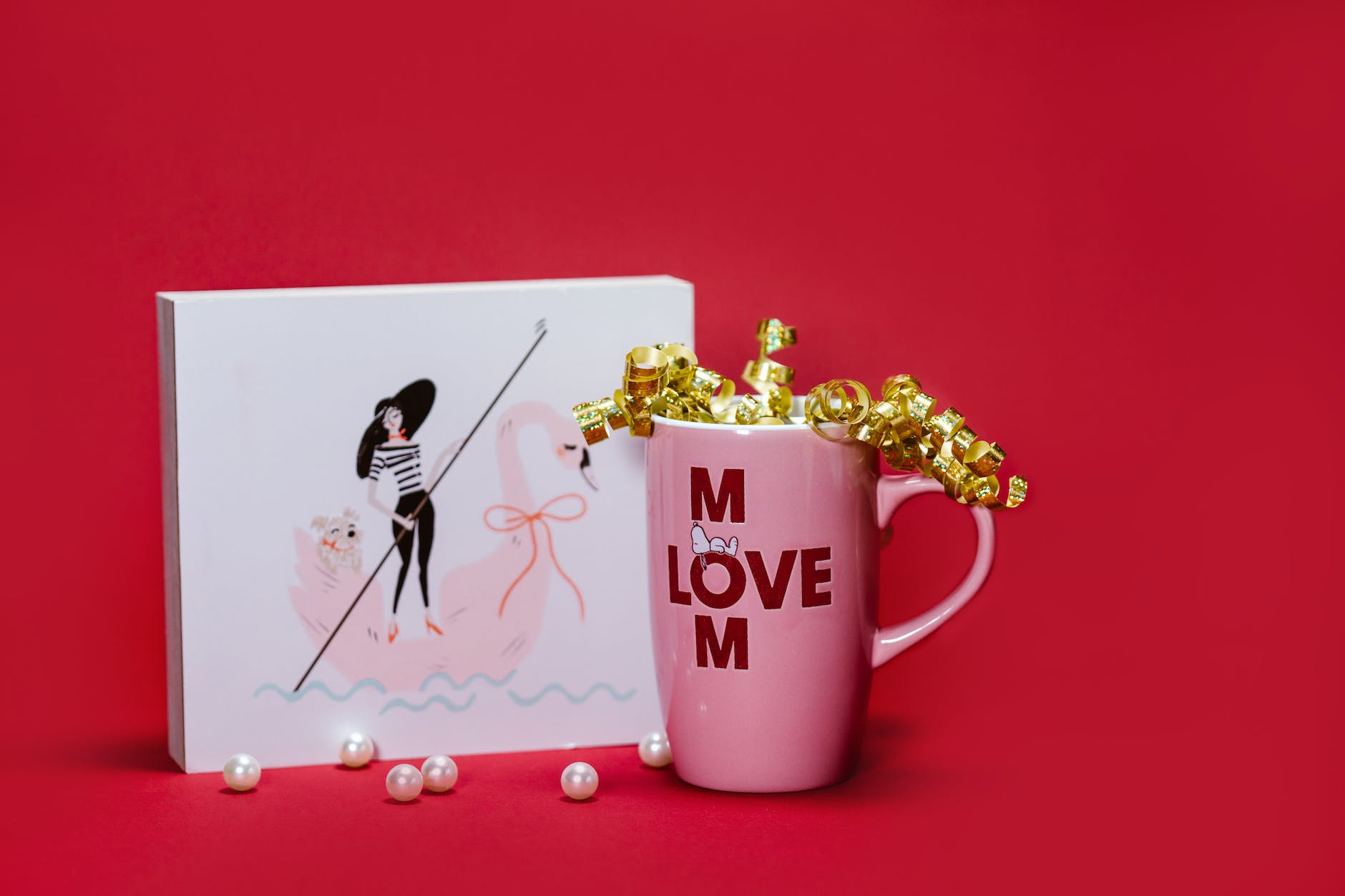
A retreat is a time taken away from the busy daily routine to concentrate on a particular objective or task. Religious groups, companies, and individuals looking to better themselves have been utilizing retreats for many years.
In recent years, the popularity of retreats has exploded, with more people than ever before looking to take advantage of their many benefits. While the concept of a retreat is simple, the process of planning and designing one that meets all of your needs can be complex. In this blog post, we’ll walk you through everything you need to know about retreat design, from the benefits of retreats to the key elements that make them successful. We’ll also provide tips and resources for planning your retreat. By the end of this post, you’ll have all the information you need to design a retreat that meets your specific goals.
The Benefits Of Retreat Design
There are many benefits to retreat design. A more holistic approach to home design means that the focus is not just on the exterior of the home, but also on its interior spaces and features. This allows for a greater sense of privacy and seclusion, as well as improved resale value. In addition, retreat design can create a more unified look for the entire property, which can be beneficial when it comes to branding and marketing your home. Finally, with greater control over the overall aesthetic of your home, you can create a truly unique living space that meets your specific needs and desires.
How To Get The Most Out Of Retreat Design
Retreat design can be a very rewarding experience. By following these tips, you can create a retreat that meets your needs and maximizes its potential.
When choosing a retreat location, it is important to consider factors such as the climate, the scenery, and the amenities available. Additionally, it is important to take into account your budget and your desired schedule of activities. Once you have chosen a location, it is important to plan your retreat accordingly.
Tips for making your retreat more enjoyable include selecting comfortable accommodations, arranging fun activities, and providing helpful information about local attractions. By taking these simple steps, you can ensure that your retreat is both productive and relaxing!
There are several things you can do to make your retreat even more enjoyable. Some simple tips include selecting comfortable accommodations, arranging fun activities, and providing helpful information about local attractions. By taking these simple steps, you can ensure that your retreat is both productive and relaxing!
If you are looking for something a little more unique, many options are available for customizing your retreat. You can find great resources online or at your local library. Additionally, if you have a specific idea in mind, it may be worth hiring an expert to help create the perfect retreat for you. Whether you stay in one location all week or explore different areas throughout the week, a well-planned retreat will provide lots of benefits!
The Five Key Elements Of Retreat Design
When planning a retreat, it is important to choose the right location. This can be a difficult task, as many inspiring locations exist. It is also important to find the perfect property – one that will truly inspire you. After you have chosen your location, it is time to start designing your retreat.
One of the key elements of retreat design is incorporating nature into your design. This can add a lot of richness and beauty to your retreat experience. Additionally, Feng Shui can create good energy flow in your retreat area. Following these five key tips ensures that your next vacation is nothing short of amazing!
When incorporating nature into your retreat design, be sure to consider the environment. For example, if you are designing a mountain retreat, make sure to include aspects of the surrounding environment in your design. Similarly, if you plan a beach escape, consider including pieces that reflect the ocean’s natural beauty.
Additionally, it is important to take into account Feng Shui when designing your retreat area. Following certain guidelines can create an enjoyable and relaxing atmosphere for all guests. In addition to creating good energy flow within your retreat area, Feng Shui can also help improve overall mental health and well-being!
Tips For Making Your Retreat More Effective
When planning a retreat, it is important to have a clear intention in mind. This will help to ensure that the retreat is focused and productive. Additionally, it is important to keep the number of attendees small. Having too many people in one place can cause distractions and chaos. It is also helpful to make sure everyone knows what their role is during the retreat, and to set expectations accordingly.
Structure is key when planning a retreat. Creating a framework that allows for flexibility can be very beneficial. For example, if there are certain aspects of the retreat that must be completed by a specific date, then this deadline could be included in the structure. This way, all participants know what they need to do and no one gets left behind!
One of the most important elements of a successful retreat is communication. It is essential that everyone knows what to expect and what their role is during the retreat. This can be done by creating an itinerary, setting up meetings beforehand, or having all participants write down their goals for the retreat.
Finally, it is important to take care of yourself while on the retreat. Make sure to schedule in time for relaxation and self-care opportunities. This will help you to have a positive experience and come back revitalized!
Case Studies: Real-World Examples Of Successful Retreats
It can be difficult to find the time and energy to retreat, especially if you’re constantly hustling and focused on your work. However, taking a break is essential for both your mental and physical health. In this section, we wanted to share some real-world examples of successful retreats so that you can learn from their successes and failures. We also provide tips on designing your own retreat based on your specific needs. Finally, make sure to highlight your retreat whenever possible in order to make it stand out from the rest!
Take a look at the following examples of retreats that were highly successful. Each retreat had different goals, objectives, and methods but all of them managed to achieve their goals.
The first example is a three-day meditation retreat led by Tara Brach. The goal of this retreat was to provide participants with an opportunity to focus and connect with their innermost selves. The method chosen for this retreat was meditative vipassana practice which allowed for deep concentration and introspection. According to Brach, “This type of practice can help us learn more about our habitual thoughts and how they affect our emotions.”
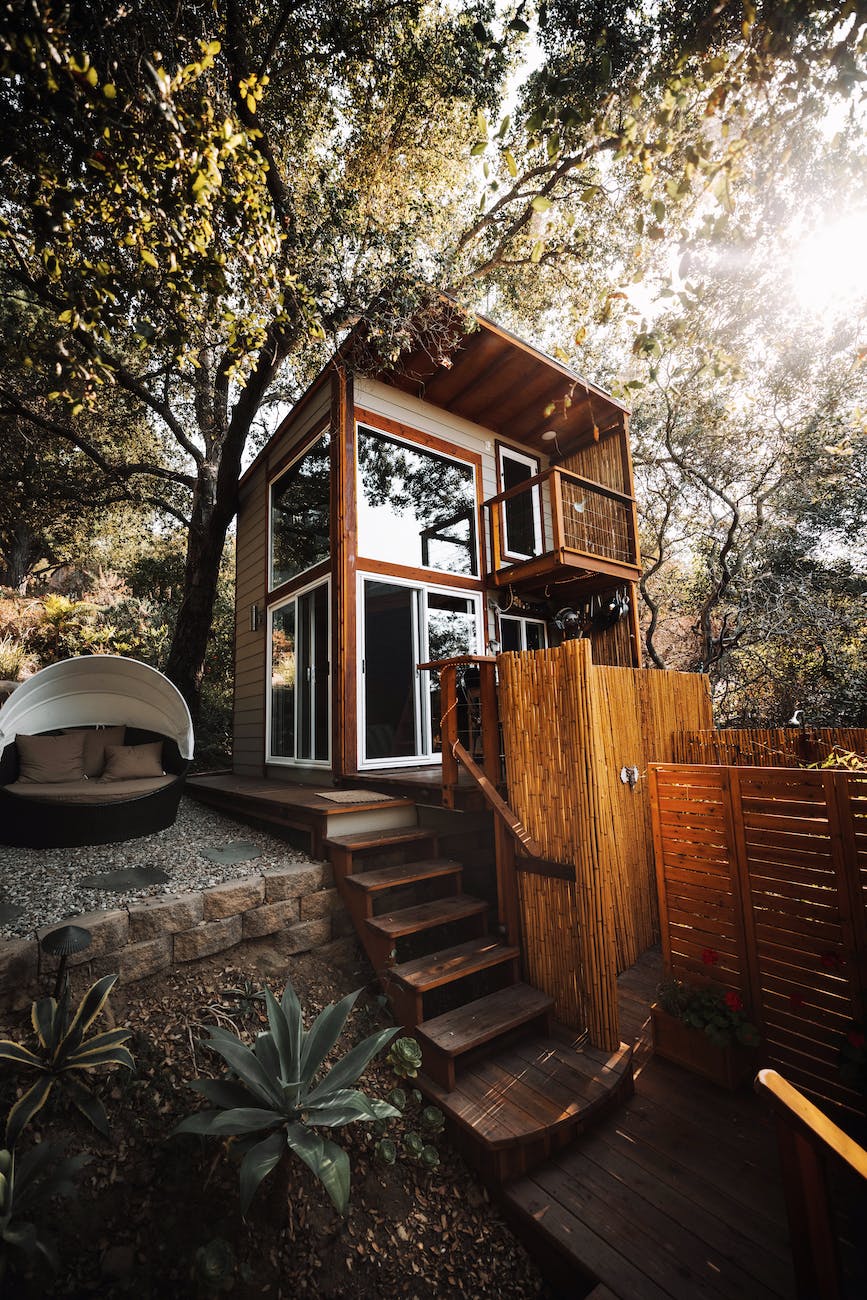
The second example is a ten-day yoga teacher training course led by Beryl Benderly. The goal of this retreat was to improve the teachers’ skills in both instruction and student care. The method chosen for this retreat was classical Hatha yoga which aimed to enhance flexibility, breathing, posture, balance, coordination, strength, stamina and concentration. Benderly reports that “the teachers who completed the course felt more confident in their ability to offer students dynamic classes that meet everyone’s needs.”
So what are your plans? Are you interested in learning from these successful practices or would you like to design your own retreat based on your specific needs? Make sure to highlight your event whenever possible so potential attendees can find out more!
The History Of Retreats And Their Place In Today’s World
Retreats are a great way to relax and rejuvenate. They have been around for centuries and have played an important role in the development of psychology and psychiatry. In this section, we will explore the history of retreats, how they are designed today, and what types of retreats are available. We also provide tips on how to find the right retreat for you.
The history of retreats dates back to ancient times. Philosophers and thinkers such as Socrates, Plato, and Aristotle used retreats to explore their thoughts and gain new insights. In the Middle Ages, religious orders started using retreats to train monks and nuns in spiritual disciplines. Over time, the use of retreats broadened to include people from all walks of life. Today, there are a variety of types of retreats available, including therapeutic (e.g., stress relief), self-help (e.g., personal growth), creative (e.g., writing), educational (e.g., creativity training), and interfaith (e.g., peacebuilding).
When choosing a potential retreat destination, it is important to consider your needs and interests. For example, some therapeutic or self-help retreats may be better suited for individuals who are looking for methods to manage their stress levels on a long-term basis; other creative or educational retreats may be better suited for people who want to develop new skills or knowledge in a specific area.
Additionally, it is helpful to read reviews online before deciding where to go. This will help you find out what other participants have said about the experience at that particular retreat center/town/village/place, etc. Ultimately, whether you choose a traditional residential rehabilitation center or an unconventional location like an ashram in India or an ayahuasca ceremony in Brazil, retreating into nature can provide both physical and mental rejuvenation—something we can all use from time to time!
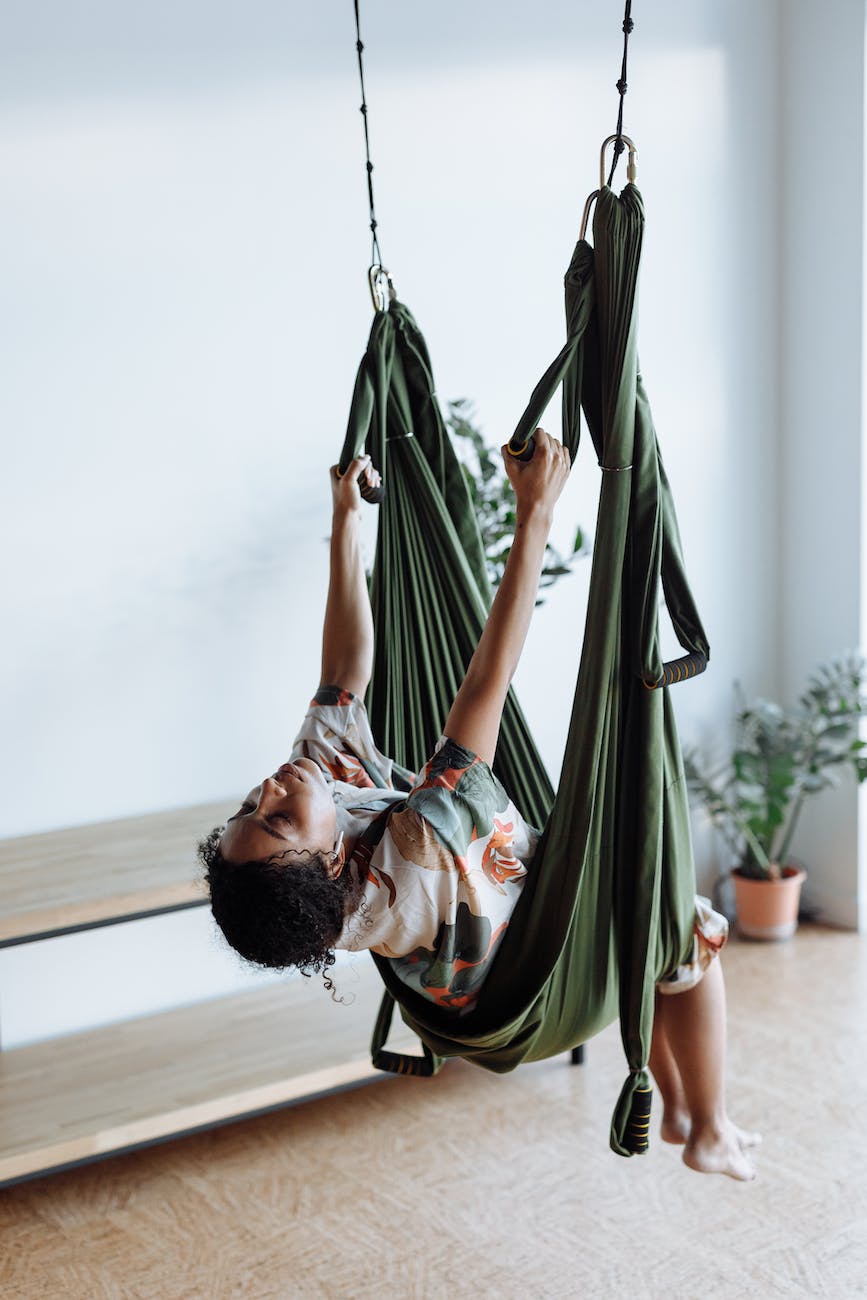
Guidelines For Planning Your Retreat
It can be difficult to take the time off work and focus on your personal growth. That’s why it’s important to have a plan for when you do decide to take a retreat. Here are some tips to help you get started:
- Define your goals for the retreat. Sometimes, it’s helpful to write out what you want to achieve during the retreat – this will help keep you focused and motivated.
- Consider what type of setting would be most conducive to meeting those goals. Do you want a secluded location, or would public exposure be more beneficial? If you’re looking for creativity stimulation, might an open space be better? Once you’ve decided on a setting, check availability (and price!) before making reservations.
- Make a realistic budget and timeline for the retreat. This is key – if your budget is too tight, certain activities may not be possible or tempting; likewise, if your timeline is too short, you may not get as much out of the experience as possible.
- Choose activities that align with your goals and suit your personal preferences. Some people prefer meditation while others prefer working on their creative projects; find something that works best for you! And remember distractions are also part of the experience – embrace them!
- Plan for downtime – it’s important too! No one expects uninterrupted concentration while away from home… especially during a relaxing retreat! Be prepared with ideas about things to do when downtime becomes overwhelming (or boring).
To Summarize
Retreats can be highly beneficial for individuals, businesses, and religious communities. By designing a retreat that meets your specific needs, you can ensure that your experience is both productive and relaxing. Use the tips and resources in this blog post to plan your own personal retreat, and make sure to include key elements such as nature, Feng Shui, and structure in your design. With a bit of planning and effort, you can create a retreat that will leave you feeling refreshed and inspired!
- About the Author
- Latest Posts
Meet Katherine, the creative enthusiast at ByRetreat who infuses her boundless passion for design into every remote workspace she crafts. With an innate sense of creativity and an eye for unconventional beauty, Katherine brings a unique and inspiring perspective to the team.
Katherine’s love for design is infectious, and her ability to think outside the box sets her apart. She believes that true artistry lies in embracing a variety of styles and mixing them harmoniously to create captivating spaces. By combining different textures, colors, and patterns, Katherine weaves a tapestry of creativity that breathes life into each remote workspace.
-
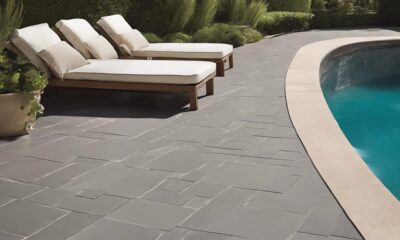
 Vetted2 days ago
Vetted2 days ago15 Best Tile Adhesives for Outdoor Use – Top Picks for Durable and Weather-Resistant Installations
-
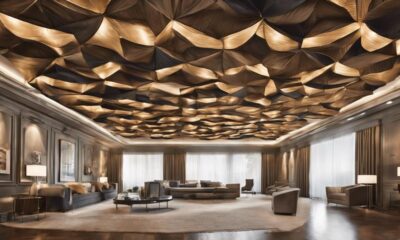
 Vetted1 day ago
Vetted1 day ago15 Creative Ways to Cover Up Popcorn Ceilings and Transform Your Space
-
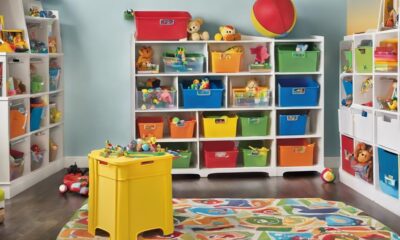
 Vetted13 minutes ago
Vetted13 minutes ago15 Best Playroom Storage Solutions to Keep Your Kids' Space Organized and Fun
-
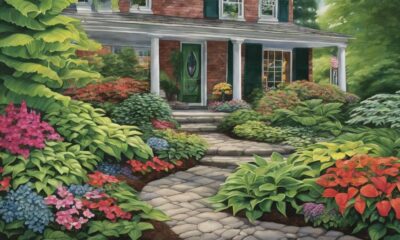
 Vetted3 days ago
Vetted3 days ago15 Best Plants to Thrive on the North Side of Your House – A Gardener's Guide
-

 Vetted1 week ago
Vetted1 week ago15 Best Boxwood Varieties for Thriving in Full Sunlight
-

 Vetted2 weeks ago
Vetted2 weeks ago15 Best Ways to Label Clothes for Nursing Home Residents – Stay Organized and Efficient
-

 Decor5 days ago
Decor5 days agoAre Home Decor Stores Profitable?
-

 Vetted2 weeks ago
Vetted2 weeks ago15 Best Dryer Vent Hoses to Keep Your Laundry Room Safe and Efficient















